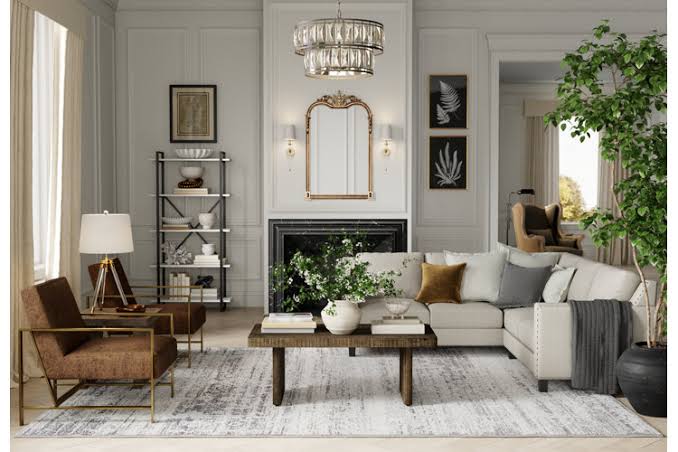A home that feels both timeless and fresh is a creation that takes so much thought and love. Many people love the character that traditional design brings, yet they also want the clean lines and comfort that modern design offers. Combining the two does not need to feel complicated. With a little tweak in the approach, you can design interiors that feel elegant, warm, and practical at the same time.
The idea starts with picking which elements of tradition should remain at the heart of the home. From there, modern details can be layered in to provide balance and functionality. Lighting often plays a key role in this mix. For example, LED chandeliers demonstrate how a single feature can preserve classic beauty and deliver the convenience of a modern touch. These small but thoughtful choices help homeowners enjoy the best of both worlds without compromise.
1. Keep the Foundational Elements Neutral
If you keep the foundational design elements neutral and simple, you already won. The colors chosen for walls, flooring, and large furniture pieces create the canvas upon which everything else rests. Neutral tones such as ivory, beige, or soft gray can blend in seamlessly with the rest of the design. Besides, they work equally well with traditional wooden furniture and sleek, modern accents.
Another advantage of neutral foundations is that they are evergreen. For instance, if a homeowner decides to change accent pieces, the overall balance will remain intact. These tones act like a bridge, ensuring both design eras look comfortable in the same space.
2. Create a Mix of Classic Furniture and Modern Finishes
Furniture pieces are elements that carry the strongest traditional presence in a home. Heavily carved wooden pieces or heirloom chairs hold historical and sentimental value. However, leaving them as they are can sometimes make a room feel too dated.
So, the trick here is to update them without compromising on their original charm. One way to do this is through new fabrics or finishes. Reupholstering a classic chair with a crisp, modern textile gives it new life. Likewise, refinishing a traditional dresser in a matte black or soft gray brings it into the present.
3. Adorn Your Ceilings with the LED Chandelier
Lighting can do a great job when it comes to bringing harmony into a mixed-style home. The perfect light fixture choice sets the mood, creates harmony between the various design choices, and adds character. That said, LED chandeliers can be a top-notch choice in this regard. They imbue the elegance of traditional chandeliers and still manage to offer a modern twist with their energy efficiency.
These lights can serve as striking focal points in entryways, dining rooms, or living spaces. They illuminate a room with a warm glow while consuming far less electricity than older bulbs. As such, homeowners no longer need to choose between beauty and practicality.
4. Blend Textures and Create Depth
Many think design is all about how the space appears in front of someone. But in reality, there is the element of feel as well. Textures add dimension and warmth, allowing multiple styles to coexist naturally. A thick, vintage rug can anchor a sleek glass coffee table. Likewise, rough wood beams can complement smooth marble counters in a kitchen.
Combining these surfaces creates interest without overwhelming the senses. Together, the elements showcase each other’s strengths. Modern spaces can sometimes feel cold, while purely traditional ones may feel heavy. Texture mixing can be a great way to resolve this by creating harmony through contrast.
5. Use Accents to Bridge Styles
Accessories are smaller in scale, making them easy to switch out or experiment with. A modern abstract painting above a classic fireplace instantly updates a room. Antique vases filled with fresh greenery provide a bridge between eras.
Mirrors, lamps, and decorative bowls are also versatile tools. Placing a gilded mirror in a sleek hallway or using a modern lamp on a vintage side table demonstrates balance without forcing it. These details act as the glue that holds both sides of the design together.
6. Add Statement Walls
Sometimes a single wall is more than enough to showcase the meeting of two styles. Exposed brick, reclaimed wood, or stone walls bring rustic tradition. Pairing them with modern tones, metallic finishes, or geometric wallpaper adds contemporary energy. The result is a bold yet inviting look. This approach can work like a charm in living rooms, bedrooms, and even bathrooms. It allows one element of the home to display history while another emphasizes the present.
Balancing traditional design with modern style lies in making intentional choices. Neutral foundations, updated furniture, layered textures, and flexible lighting all work together to create harmony. Moreover, features such as LED chandeliers show how history and innovation can meet in a single detail. By applying these tricks with care, homeowners can enjoy spaces that celebrate both past and present, all while feeling uniquely their own.

